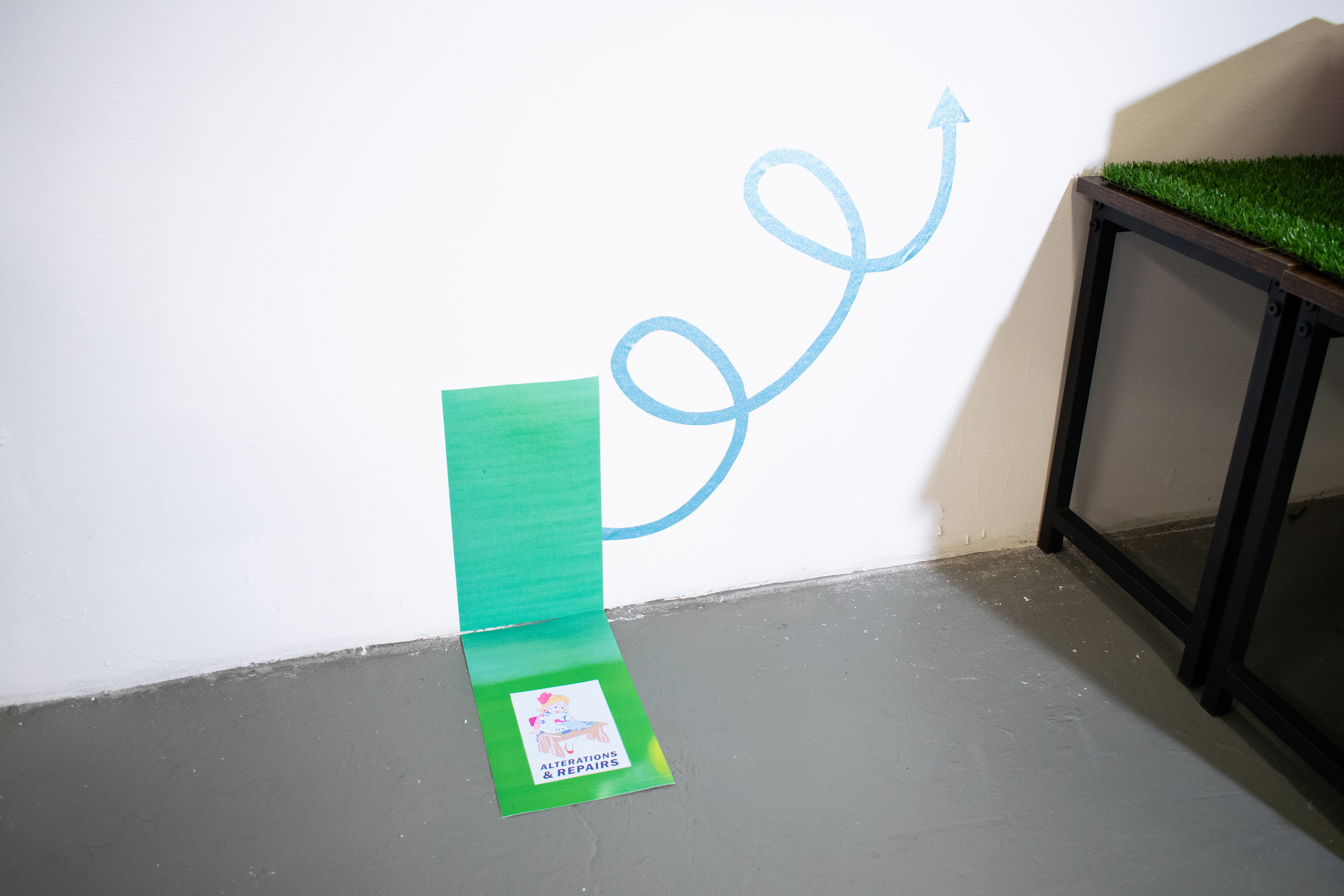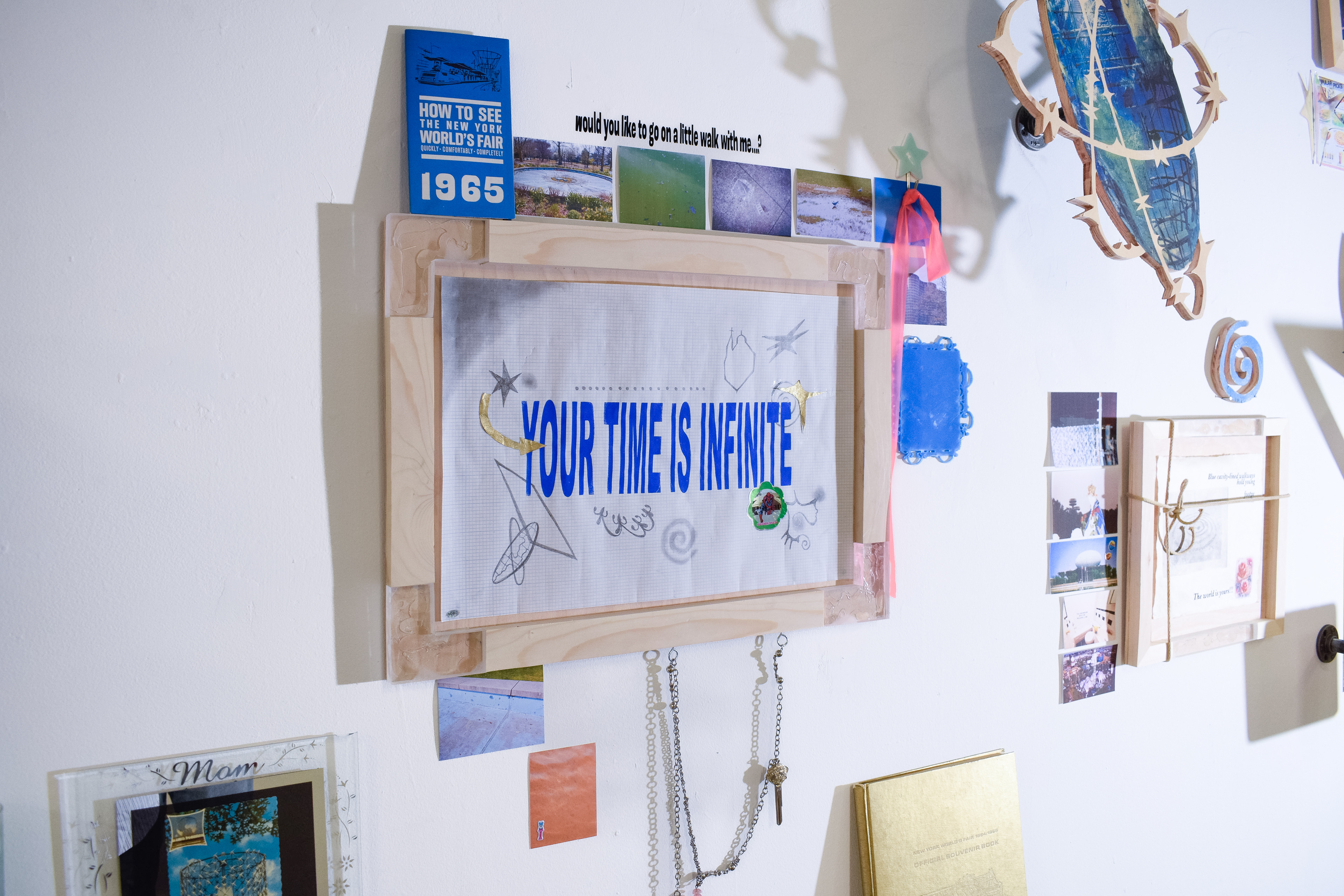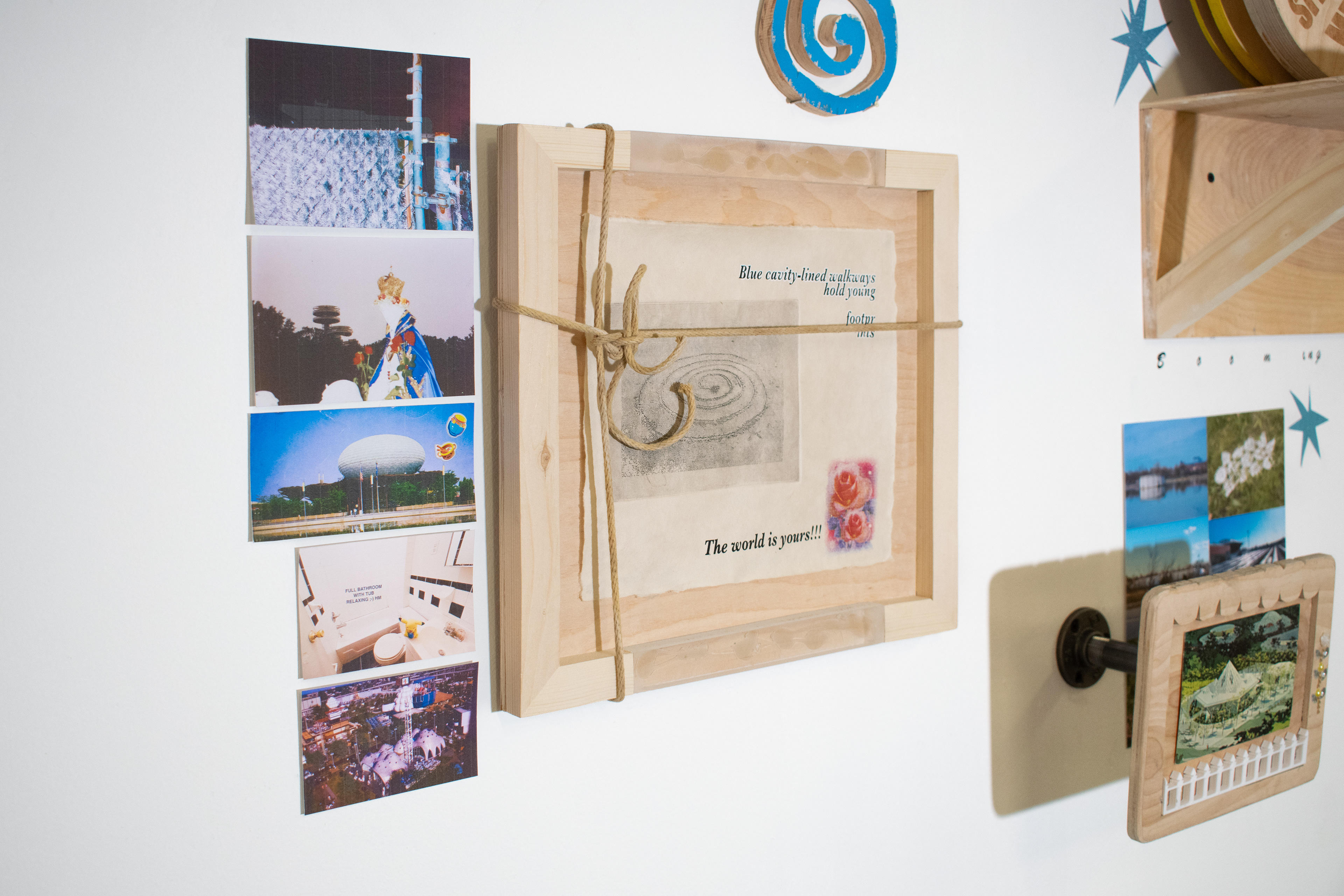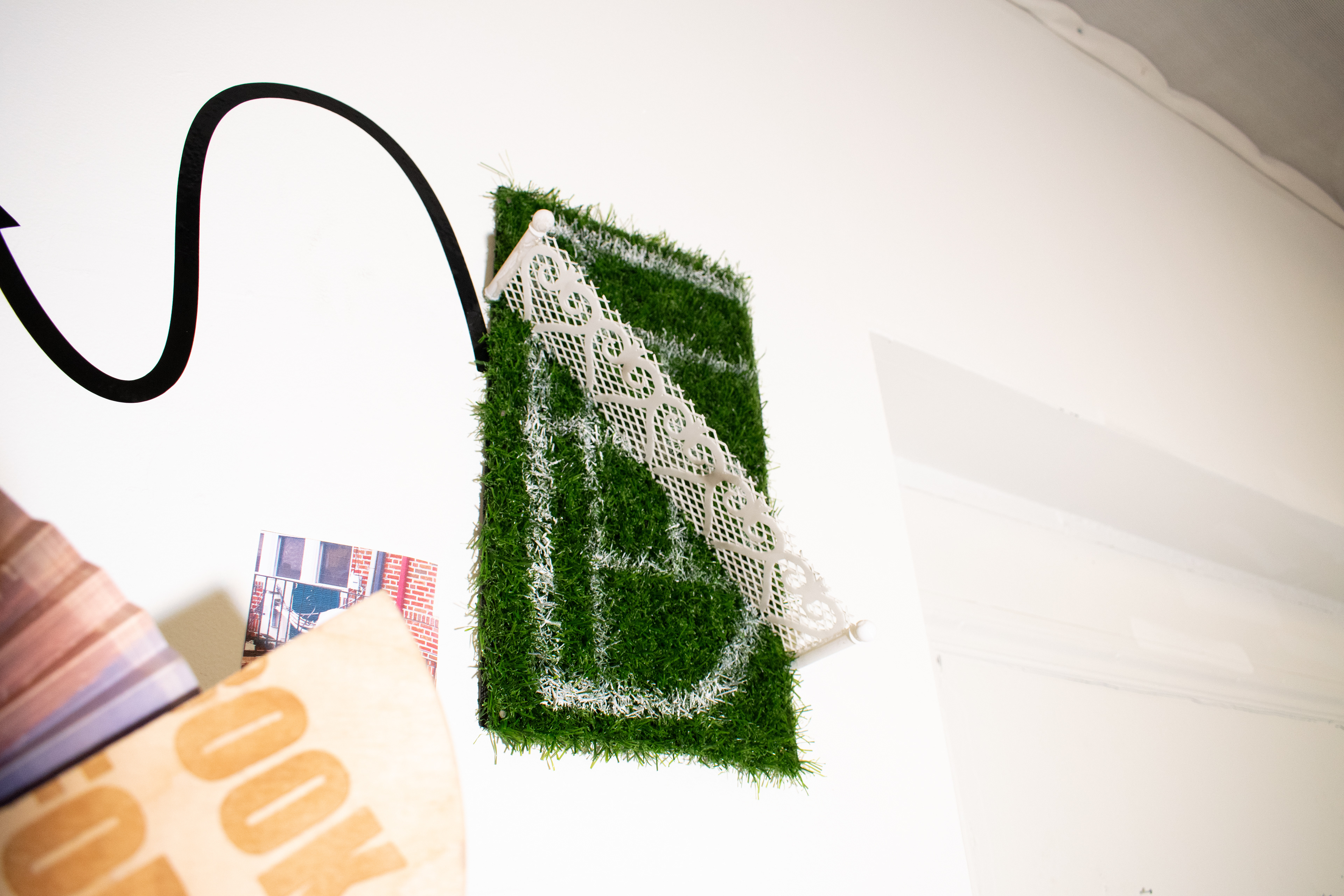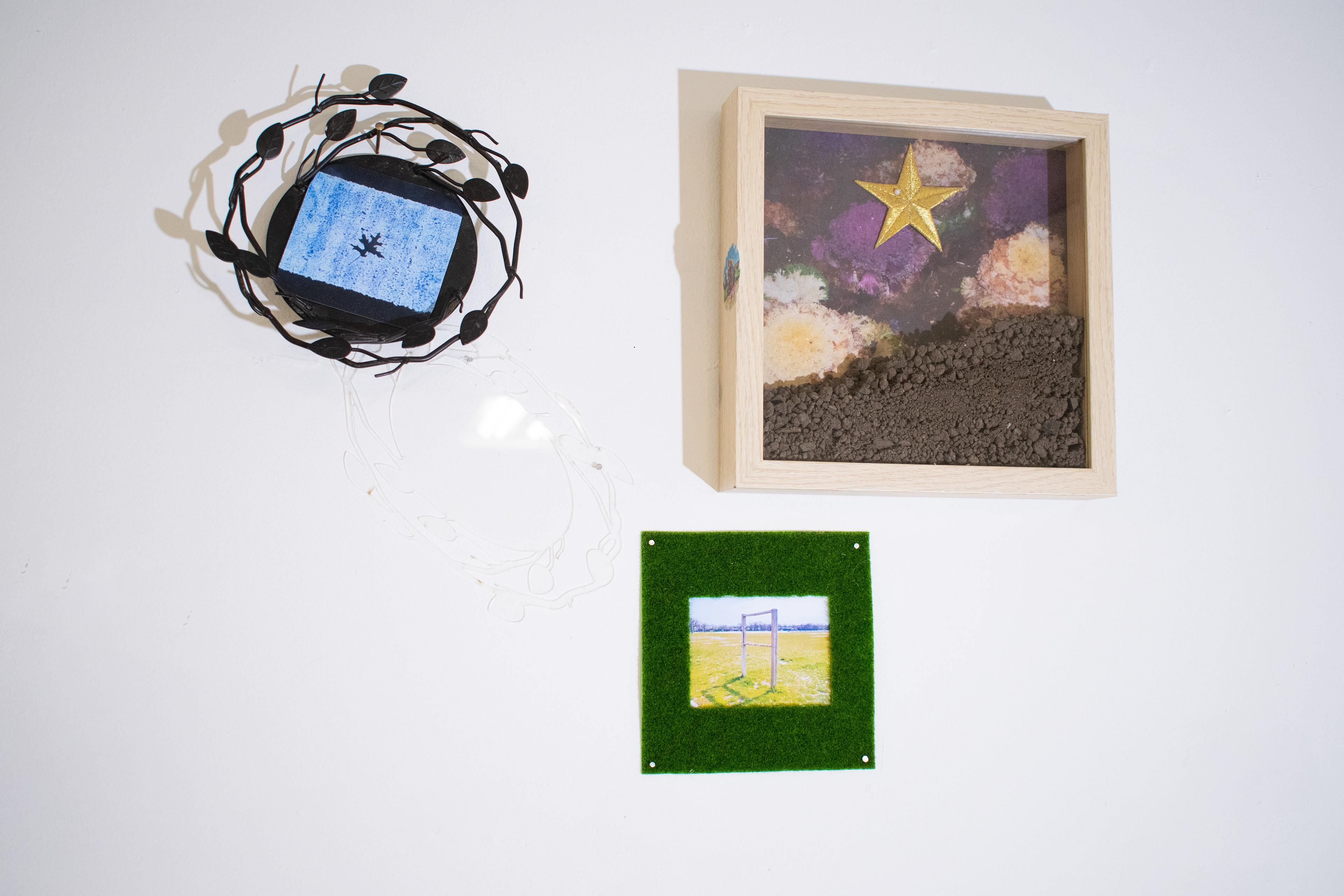Multimedia installation of 4 sculptural books (screenprint, laseretch, dye sublimation on wood, 3D print, hardware, with inset books printed on Stonehenge, Canson, and canvas), screenprint, woodburning, acrylic paint on wood, various prints, drawings, and photos in artist frames, astroturf, inkjet photo prints, found lace, 1964 New York World’s Fair souvenirs, lasercut acrylic, and vinyl wall decals
Dimensions variable


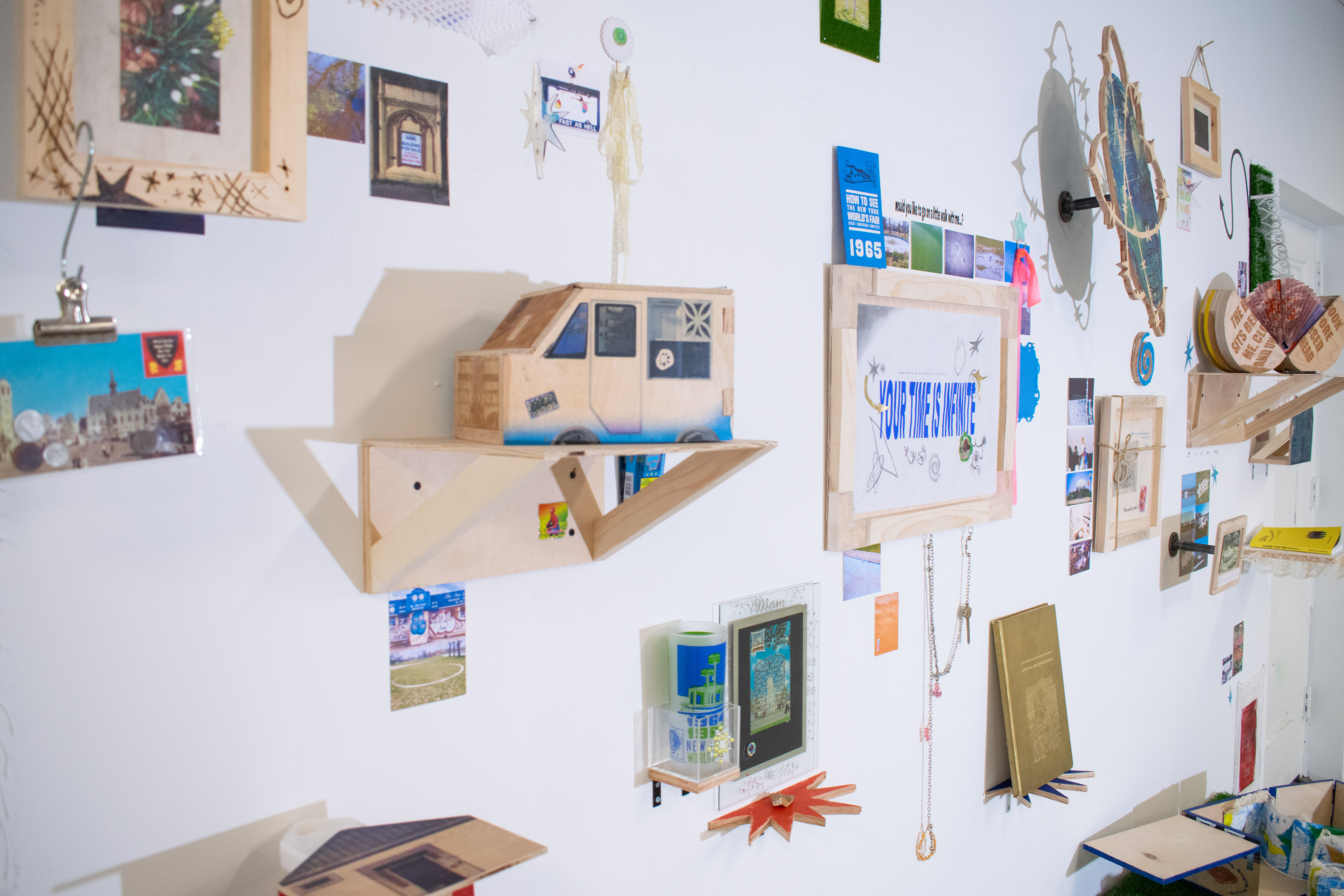

The 1964-1965 New York World’s Fair (1964 NYWF) was held in what is now known as Flushing Meadows Corona Park, organized by infamous City Parks Commissioner Robert Moses. In the early twentieth century, Moses had chosen the site of Flushing Meadows symbolically– then the infamous Corona Ash Dump– as a place to establish what he called Queens’ “Central Park,” to honor his own “legacy” (with heavy quotation marks). In 1939, the first World’s Fair failed to raise sufficient funds to properly develop this park, so Moses tried again a second time, almost 30 years later in 1964, but again, despite bringing in a record number of 51 million visitors, the exposition was a net financial loss. The park as Moses envisioned was never properly actualized. Today, Flushing Meadows is populated by the communities that surround it (Corona, Flushing, Kew Gardens, Fresh Meadows, Forest Hills), the numerous institutions that sit within it (the Queens Museum, Hall of Science, Terrace on the Park, Queens Theater, and Queens Zoo), and the ruins from the exposition that the park was built for. And I’m here, too. My family fled the Soviet Union in 1991 and moved directly to Forest Hills, where my grandparents still live. I grew up down Jewel Ave from them in Fresh Meadows, bordering Flushing Meadows on its east side.
Today, the World’s Fair’s physical legacy stands gauntly amongst the grassy fields and expressways of central Queens, its mid-century ambitions dated, its hopes extinguished. In interrogating this history in relation to the borough that surrounds it, what connections unfurl, what tensions arise, what histories conflict, what futures open? Queens is known by its residents as a place of community, diversity, and complexity. In this context, the 1964 NYWF acts as a tool for recentering the borough, an avenue for an argument that already exists to the people that live there: that Queens has the capacity for legacy.
Growing up here, I have realized that there is a particular smell or feeling that I have not yet named, that has in it melancholic nostalgia, or jittery awkwardness, or something in between. To preserve my memories, to locate and give shape to this smell and feeling, I collect and make, and have produced a body of work centered around Queens and the 1964 NYWF. I pick things up off the ground and out of the dollar store, from the photo album and from the top of mall parking lots and playgrounds. I stick my head out of cars to snap a picture of a funny word, or peel the foam encasements off of pears in grocery stores. I create my work by deciphering this archive I’m building, drawing connections between histories and present, community and individual, street and neighborhood. Through this body of work, I consider my positioning in the local sphere, the working-class, international borough of Queens, and how it stands (quite literally) juxtaposed to a world’s fair that just celebrated its 60 year anniversary. It screams out, that I am here! And you are, too.









